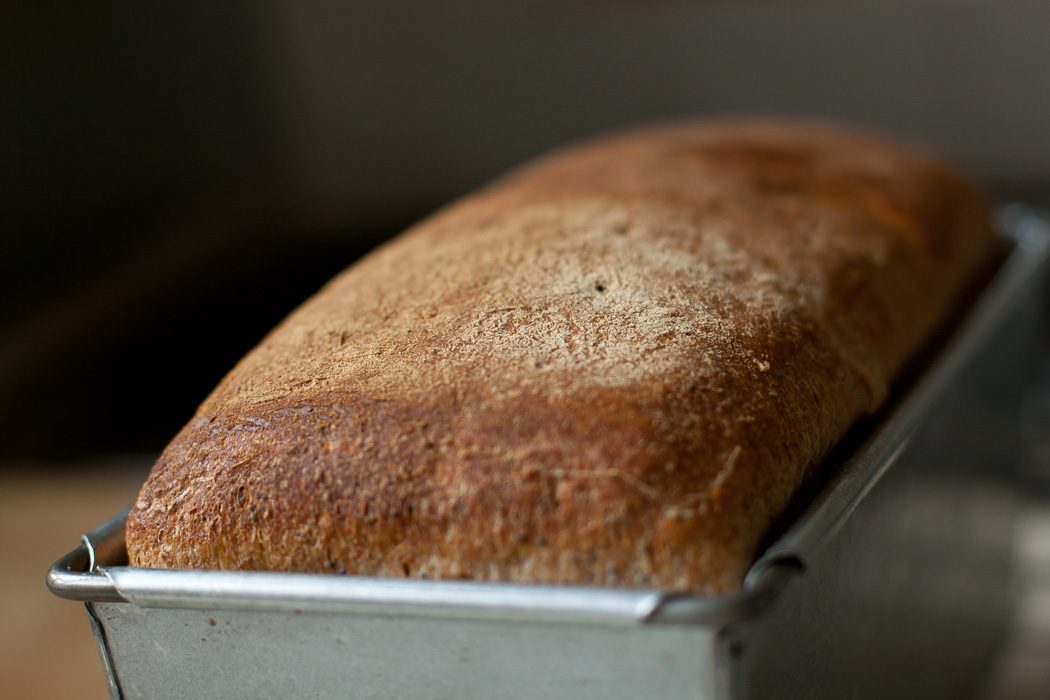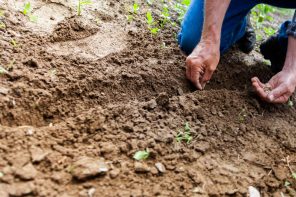Editor’s note: Due to server issues this week, our throwback piece from Topology’s predecessor, catapult magazine, is being published on Friday. In this essay from 2003, I write about learning to bake bread in the house my great grandparents built.
The other day, I told my husband Rob that from now on, I’d like to buy real butter instead of sticks of margarine.
“Why?” he asked. “Isn’t butter worse for you?”
“Maybe, but I don’t care. There’s just something about cooking with real butter in my great-grandparents’ house that I like.”
Here’s a little bit of history about the house we live in: my great-grandfather and my great-great-grandfather built it in the 1920s on what was then a piece of farm land extending from a long ridge that followed the coast line of Lake Michigan about fifteen miles inland. Along the ridge was a road, appropriately named Ridge Road, on which, a few years later, my great uncle would be killed at 11 years old in a hit-and-run accident. My grandmother was a toddler when this incident happened and the necessity of caring for a two-year-old was all that kept my great-grandmother going. She had four other daughters who were much older than my grandma and beginning to go their own ways.
Three of the older daughters would marry men who would fight in World War II and, miraculously, all return alive. While their husbands were away, two sisters, with the help of their carpenter father, built a beauty parlor in part of the basement. Then, after the war, great-grandfather’s carpentry skills came in handy once again when one of the sisters, Violet, along with her husband and two children, needed a place to live. He set to work adding a kitchen, bathroom, and separate entrance to the second floor, where before there had been three bedrooms. In the meantime, the obsolete beauty parlor was transformed into another apartment where my grandma and her husband would live for a short time after they were married and where my mother would be conceived.
The next stage of our home’s development was when my great-grandfather died in 1973. Great-grandma, having had a heart attack earlier, occupied herself with planting flowers and caring for her chihuahuas, Mickey, Peggy, and then Chi Chi. She lived on the main floor of the house and rented out the upstairs apartment, then passed away ten years later. The home entered the real estate market briefly until the contract with the realtor expired, at which time my grandparents bought the house. My grandma was elated. Since then, they have rented the three apartments in the house—upstairs, main floor, and basement—to a series of tenants including single men, single women, single mothers, single fathers, married couples, divorced couples, even to themselves while my grandfather was building a new home, and finally, to my then-boyfriend.
For a while after my boyfriend dropped out of college, he felt a bit like a fly to which a young boy had tied a string and then “set free.” He flapped his wings at the end of the line, feeling like he needed to exchange a valued part of himself in order to gain his freedom. His parents, however, were not being restrictive out of malice, but out of love, and it was out of love that they finally untied him and co-signed the lease to the basement studio apartment. Eight months later, the second floor apartment opened up and Rob put his name in. He could barely afford the increased rent, but needed the space and light in order to persist in the mundane and bureaucratic career world. Another eight months later, I began moving my things in from my apartment at school as we prepared for our wedding, New Year’s Eve, 2000. We married and I finished my last semester at school, commuting back and forth during the week and on early spring weekends, raking the leaves out of the overgrown areas of our yard to once again expose great-grandma’s day lilies and tulips and daffodils. In May, I graduated and we went on a late honeymoon to Ireland. Then, I worked outdoors all summer for a local parks department, while maintaining our own garden in the backyard along with our various flower beds.
I love this house. Looking around at the spring perennials my great-grandmother planted, at the cellar where only a few years ago my grandma found great-grandma’s preserves, at the high honey-colored wood trim on the walls, at the chicken coop that still stands in the back, at the tools and nails that my great-grandfather left behind exactly where he placed them decades ago, at the funny quirks like the strange shower in the basement and the window that somehow got trapped behind an interior wall—looking at all of these things, I feel embraced by the warm arms of history that are composed of all of the hugs I would have ever received had I been every woman who was ever a little girl in this place.
And this is why I want to buy real butter.
A couple of weeks ago, I made my first foray into the world of homemade yeast bread. I had been wanting to make cinnamon rolls for a while—about a month and a half actually, since we went to Sioux Falls, South Dakota for the day with some friends from Iowa and arrived at the mall an hour too late to get Cinnabon. Then, the evening of the day I broke down and baked, we were going to a church meeting for which we had to bring a dessert. Okay. So I looked up a recipe, bought some yeast, powdered sugar, and real butter and set to work. I had allotted an entire afternoon.
I cleared the kitchen table, made the dough, spread flour, and kneaded. While the dough was rising in a warm oven, our friend Charles came over for a cup of coffee and I continuously checked under the towel to make sure nature was taking its course. It rose indeed. I prepared the rolls and put them in the oven. While they were rising for a second time and baking, my brother came over for help with his English homework. I could only half concentrate on interjections and conjunctions while I began, with pride, to smell the glorious smell of fresh cinnamon rolls filling the kitchen. Finally, they were done, arranged on a decorative tray and iced, ready for the party. It was all I could do on the way there not to try one.
They weren’t perfect, but they were very good, especially, and sadly, next to the dry brownies someone else had baked. I received many compliments, but these were not the source of my joy. The source of my joy was in once again asserting myself as part of the community of family. I pictured my great-grandma kneading dough in her kitchen with younger, smoother hands while my two-year-old grandma watched, and later with older, rougher hands while my two-year-old mother watched. I pictured her setting towel-covered bowls to rest on the radiator. I pictured her sneaking some of the finished product into Chi Chi’s bowl. And I pictured her using real butter.
The community of family, the gathering of all of these imperfect ingredients, dead or alive—soldiers, mothers, carpenters, brothers, beauticians, children, sisters, fathers, teachers, and grandparents who are stern, tall, joyful, young, regretful, quiet, sad, beautiful, or old: this is why I live in this house and this is why I make cinnamon rolls from scratch with the real stuff—the fatty, unhealthy real stuff. Some things we cannot replace and some things we will not replace.
Last night, Rob and I made pizza from scratch. Slightly more confident, but still apprehensive, I mixed and kneaded and rolled and waited and waited. But it turned out fine. Not perfect, but fine. I am learning. Perhaps some day, I will make dough from scratch as often as Rob and I ask the question, “Where do we go from here?” Do we try to buy this house and make our lives here? Or do we move far, far away? Do we become teachers or artists or writers or all of these and everything in between? But for now I know two things: I love this house and I will only bake with real butter. The other things will follow.





